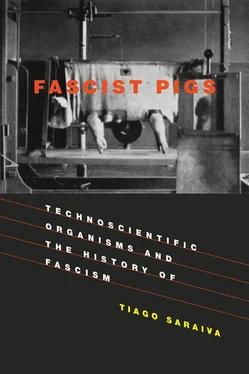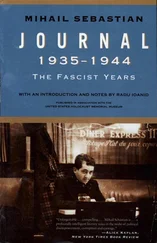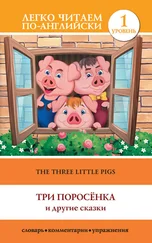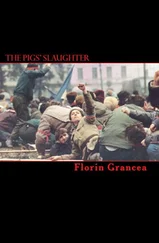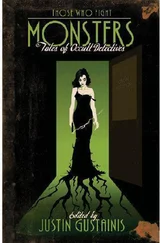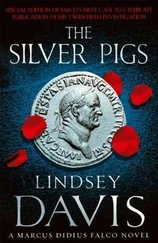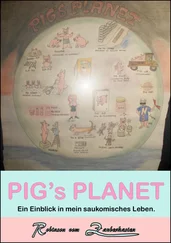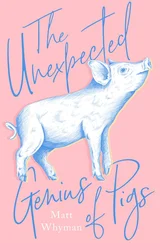Figure 5.5 Experimental plots of kok-sagyz at the Rajsko subcamp, part of the Auschwitz complex, 1943–44. (Bundesarchiv, Bild 146–2007–0095)
Figure 5.6 Aurélio Quintanilha speaking at a conference in 1933. (Arquivo Torre Tombo PT/TT/EPJS/SF/001–001/0025/0310H)
Figure 5.7 The experimental network of the Centro de Investigação Científica Algodoeira. (F. Neves Evaristo, “The assessment of losses caused by insects on cotton in Mozambique,” Agronomia Moçambicana 1, no. 4, 1967: 191–199)
Figure 5.8 Cotton varieties in various regions of Mozambique, 1966–67. (Relatórios, Actividade do Instituto do Algodão de Moçambique nos anos de 1962 a 1967, Arquivo Instituto Português de Apoio ao Desenvolvimento MU/PP/20)
Figure 5.9 Genealogy of cotton varieties cultivated in Mozambique. (P. Pereira de Carvalho, “Breve descrição das principais cultivares de algodoeiro existentes em Moçambique,” Agronomia Moçambicana 1, no. 3, 1967: 149–158)
Figure 6.1 An astrakhan coat made from the fur of Karakul sheep. (Gustav Frölich and Hans Hornitschek, Das Karakulschaf und seine Zucht , F. C. Mayer, 1942, p. 207)
Figure 6.2 Heinrich Himmler (wearing eyeglasses) at a 1941 exhibition dedicated to “Planning and Building in the East.” (Bundesarchiv, Bild 146–1974–079–57 / CC-BY-SA 3.0)
Figure 6.3 The Kaiser Wilhelm Institute for Animal Breeding depicted as a model settlement, 1941. (Jahrbuch der Kaiser Wilhelm Gesellschaft, 1941)
Figure 6.4 The front cover of Das Karakulschaf und seine Zucht , a book by Gustav Frölich and Hans Hornitschek (F. C. Mayer, 1942).
Figure 6.5 Karakul curl patterns. (Frölich and Hornitschek, Das Karakulschaf und seine Zucht , pp. 102–103)
Figure 6.6 The register of the flock of Karakul at the University of Halle. (Frölich and Hornitschek, Das Karakulschaf und seine Zucht , p. 149)
Figure 6.7 German settlers’ Karakul farms in South West Africa (present-day Namibia). (Frölich and Hornitschek, Das Karakulschaf und seine Zucht , pp. 28–29)
Figure 6.8 “Karakul, the black diamonds of South West Africa.” (Ilse Steinhof, Deutsche Heimat in Afrika. Ein Bildbuch aus unsern Kolonien , Wilhelm Limpert, 1939)
Figure 6.9 A German settler and a Karakul ram in South West Africa. (Steinhof, Deutsche Heimat in Afrika )
Figure 6.10 A descendant of the Halle flock of Karakul at the Sidi Mesri experiment station in Italian-occupied Libya, 1937. (Report on Karakul husbandry in western Libya, Archivio Istituto Italiano per l’Oltremare, fasc. 529)
Figure 6.11 A product of experimentation with Karakul at the Sidi Mesri experiment station, 1937. (Report on Karakul husbandry in western Libya, Archivio Istituto Italiano per l’Oltremare, fasc. 529)
Figure 6.12 A map of the Karakul reservation in southwest Angola. The numbers correspond to planned concessions; 1 indicates the Karakul Experiment Station. ( O Caracul , Agência Geral do Ultramar, Lisbon, 1959)
Figure 6.13 A 1963 photo taken at a Karakul exhibition, with President Admiral Américo Tomás at the center and the veterinarian Manuel dos Santos Pereira, head of the Karakul experiment station, to his right. ( Diário da viagem do Presidente Américo Thomaz às províncias de Angola e S.Tomé e Príncipe, 1963 , Agência Geral do Ultramar, Lisbon, 1964)
Figure 6.14 The Karakul Experiment Station in the Namibe Desert in Angola, ca. 1960. (Arquivo Instituto Português de Apoio ao Desenvolvimento / MU / DGE / RRN / 1548 / 06127)
Figure 6.15 Manuel dos Santos Pereira’s instructions on how to build “indigenous huts,” 1958. (Arquivo Instituto Português de Apoio ao Desenvolvimento MU / DGE / RRN / 1548 / 16195)
Figure 6.16 A building at the Karakul Experiment Station designed according to “Portuguese house style” as codified by the Portuguese fascist regime, ca. 1960. (Arquivo Instituto Português de Apoio ao Desenvolvimento / MU / DGE / RRN / 1548 / 06127)
Figure 7.1 The 1933 Harvest Celebration at Bückeberg. (Achim Thiele and Kurt Goeltzer, Deutsche Arbeit im Vierjahresplan , Gerhard Stalling, 1933, p. 125)
This book owes much to many people. As with all the other subjects I’ve explored as an academic, it all started with conversations with Antonio Lafuente, an endless source of new ideas. In early 2004, just before I finished my dissertation in the history of science department of the Spanish Council of Scientific Research (CSIC) in Madrid, Antonio and I became increasingly interested in the theme of the mobilization of science in the twentieth century and in the particular forms that “Big Science” assumed in Spain and Portugal under those countries’ fascist regimes. In the following years, I would return to Madrid and present early versions of the chapters of the present book at the CSIC, where I benefited from discussions with its distinguished community of historians of science and science studies scholars, namely Juan Pimentel, Javier Ordoñez, Alberto Corsín Jiménez, Leoncio-López-Ocón, Jesus Bustamante, and Javier Moscoso.
It was because of that early interest in “Big Science” and fascism that I applied to the Portuguese Science and Technology Foundation (FCT) for a postdoctoral research grant that would fund my early investigations of the history of Portuguese state laboratories. Maria Paula Diogo welcomed me at the Interuniversity Center for History of Science and Technology (CIUHCT) of the University of Lisbon and the New University of Lisbon, and in the following years she would become my main interlocutor among the expanding community of Portuguese historians of science and technology. I have presented my work at several CIUHCT seminars, and I am very grateful to all the faculty members and students who took part, especially Ana Simões, Henrique Leitão, Ana Paula Silva, Ana Carneiro, and Maria Luísa Sousa. Considering the difficult budgetary situation of Portugal in the aftermath of the 2008 financial crisis, I have been amazed by how Maria Paula Diogo and Ana Simões were able to direct the main center of the discipline in the country, promoting excellent research, constantly supporting a large cohort of young scholars, organizing important international events, and maintaining a vibrant intellectual agenda around issues of knowledge production in peripheral contexts. I am also thankful to historians of science and technology and STS scholars working in other institutional settings in Portugal, namely Ana Cardoso de Matos, Fátima Nunes, Ana Luísa Janeira, Maria Fernanda Rollo, João Arriscado Nunes, and Tiago Santos Pereira.
That same postdoc grant also funded my first stay at the history department of the University of California Los Angeles (UCLA), to which I was attracted by the work of M. Norton Wise. Norton’s ability to intertwine the technicalities of concrete historical scientific practices with general concerns of history (empire, state formation, romantic culture, Nazi ideology) has been an inspiration for my own work ever since. I would return twice to UCLA as a visiting professor (in 2007–08 and in 2011) and would benefit greatly from the friendship and scholarship of Norton and Elaine Wise, Theodore Porter, Mary Terall, Soraya de Chadarevian, Sharon Traweek, and Kevin Lambert. UCLA graduate students and postdocs in the history department and at the Institute for Society and Genetics were uniquely stimulating. Robert Schraff, Lino Camprubí, and Carrie Friese were particularly generous in their intellectual interactions. Stevan S. Dubljevic was my daily interlocutor in Los Angeles, and many of the hypotheses put forward in this book were first expressed in long conversations with him and Vladan Jankovic, with the help of some very cheap pinot noir.
Читать дальше
